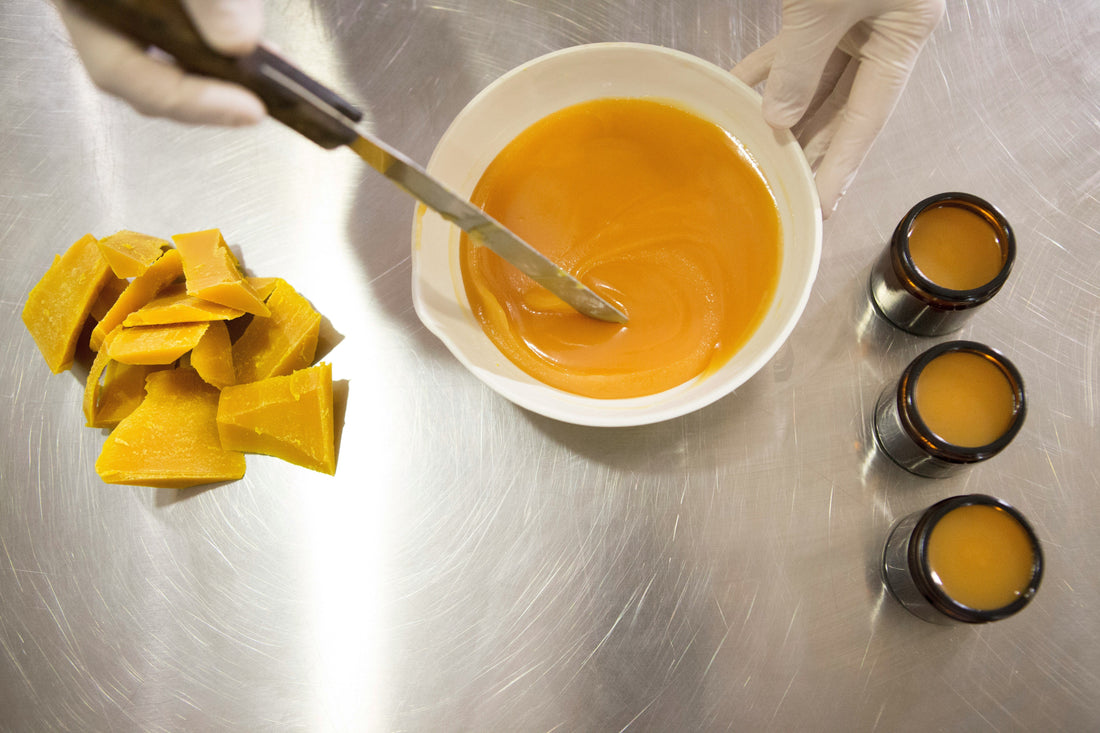
What Does “Natural” Really Mean when it comes to Furniture Polish?
The word “natural” has been given pride of place on bottles, tins, and sprays in the cleaning aisle. Its a kind of shorthand for safety, purity, and eco virtue signalling. But when it comes to furniture polish, “natural” is a slippery word that can signal either genuine craftsmanship or it could just be clever (sneaky) marketing.
Why is ‘natural’ such a contested word?
“Natural” has no universal standard. For home care products, it is often left to the discretion of brands themselves to decide on what natural means. This means a polish labelled “natural” might contain nothing more than a small proportion of plant-derived oil, bulked out with petroleum by-products dressed up with friendlier names like “mineral oil” or “natural liquid hydrocarbons.”
For you, the consumer, it can be confusing: how do you know if what you’re buying is genuinely derived from nature, or if its just a thinly veiled petrochemical.
What ingredients define a truly natural furniture polish?
At its simplest, a natural furniture polish should contain a wax, a carrier oil, and sometimes a botanical for fragrance or added benefit. Each ingredient is recognisable, pronounceable, and traceable:
- Beeswax: conditions timber, adds protective sheen, and has been used for centuries in wood care.
- Plant oils like coconut MCT (medium chain triglycerides), jojoba, or linseed: nourish and penetrate the grain.
- Essential oils (like eucalyptus): add a fresh, natural scent and mild antibacterial properties.
That’s all it takes. If there is anything beyond this, you should be digging a little further into what the ingredients actually are.
How do brands use greenwashing in furniture polish products?
Greenwashing often begins with the language that is used. A spray labelled “with natural extracts” might contain only trace amounts of plant oil, but that could easily be overwhelmed by synthetic fillers and solvents. Terms like “eco blend” or “bio-based” can mask the presence of petroleum-derived ingredients, which are cheap to produce and extend shelf life.
A telling example is the phrase “natural liquid hydrocarbons.” It sounds botanical, but in reality refers to mineral oils derived from crude oil. That is hardly the rustic, wholesome image implied on the label and definitely the opposite of what we're trying to achieve in our homes by buying natural products.
Why does this matter for your home and furniture?
Timber is porous, meaning whatever you apply doesn’t just sit on the surface; it seeps into the grain. A petroleum-derived polish might create a temporary shine, but it doesn't do much to feed the wood, and over time can leave it dry and brittle. Even worse, these synthetic fillers often build up, leaving a dull film that requires stripping back with even harsher chemicals.
Beeswax-based polishes, however, form a breathable, nourishing layer on your wood. They respect the integrity of the timber and give it resilience and lustre that deepen over time. For your children or pets, the difference also extends to safety: a low-tox, wax-and-oil polish avoids unnecessary solvents or chemical residues and avoids endocrine disruptors.
How to read a label like a pro
Here's a quick checklist for spotting truly natural products:
- Does it have fewer than 5 ingredients? Good sign.
- Are they all recognisable names like beeswax, jojoba, coconut? Better.
- No mention of silicones, mineral oils, mineral turpentine, petroleum or hydrocarbons? These are the ones you really want to avoid.
**Turpentine is a tricky one, as it can be a natural form. If you see Gum Turpentine, which comes from pine resin, thats totally acceptable and naturally derived. Mineral Turpentine, White Spirit and petroleum all come from crude oil and aren't on the wish list of ingredients.
If you need to google half the words on the label, the product may not be as natural as it claims.
Our approach at The Dairy
Our beeswax and eucalyptus polish is deliberately simple: Australian beeswax for protection, coconut MCT oil for nourishment, and eucalyptus oil for a clean, refreshing scent.
- No fillers
- No petroleum
- No synthetics
It is a polish in the traditional sense, one that rewards care and patience, leaving wood better than it found it. One that craftsmen have been using for a very, very long time.
FAQ
Is beeswax furniture polish safe?
Yes. Beeswax is food-safe and non-toxic, making it safe around children and pets when used as directed.
Does natural polish last as long as synthetic polish?
Yes, often longer. Beeswax creates a protective barrier that can outlast petroleum-based sprays, and it conditions the wood over time.
Can natural polish be used on all types of wood?
Most solid timbers benefit from beeswax-based polish. Veneers or very modern, lacquered finishes may not require it.
Is eucalyptus oil safe in polish?
Yes, in the small amounts used. It provides fragrance and antibacterial qualities, but the formulation keeps it mild.
